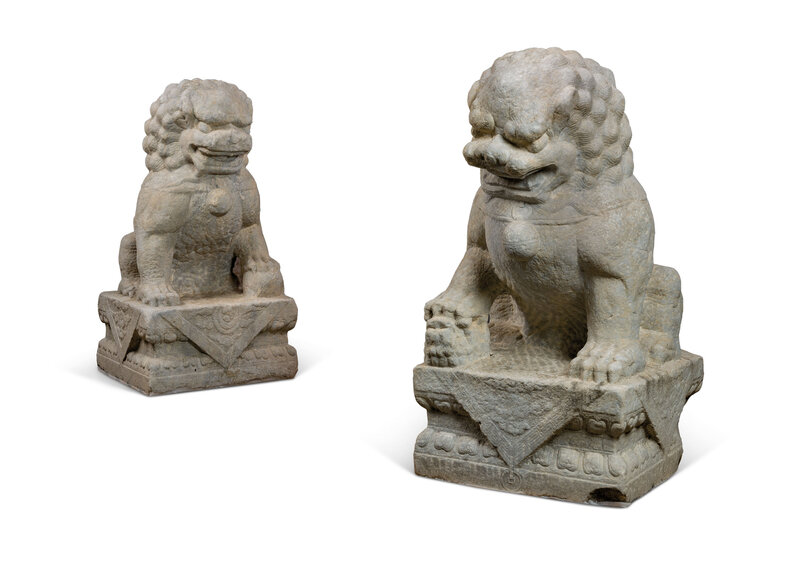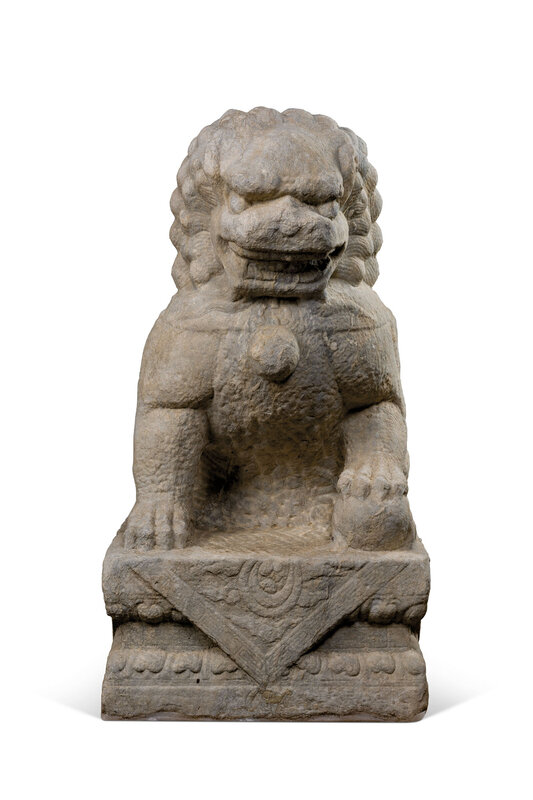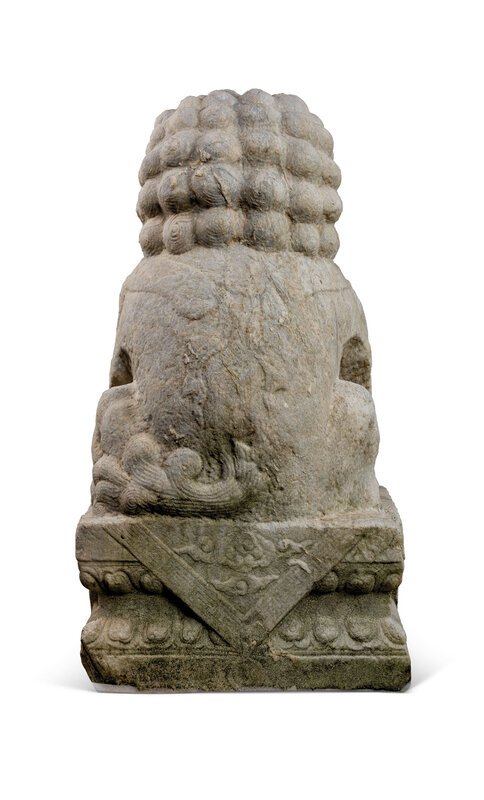Christie's. Important Chinese Art. London, 3 November 2020
A monumental pair of marble Buddhist lions, Ming dynasty (1368-1644)
Lot 23. A monumental pair of marble Buddhist lions, Ming dynasty (1368-1644); 50 ¼ in. high, 26 ¼ in wide, 27 in. deep (127.5 cm. x 66.5 cm. x 68.5 cm.). Estimate GBP 40,000 - GBP 60,000. Price realised GBP 193,750. © Christie's Images Ltd 2020.
Each lion is carved seated on its haunches on a waisted lotus plinth with drapings, wearing a tasselled collar carved in relief that is hung with a bell suspended above the chest. One beast has its right paw resting on a cub, the other has its left paw resting on a ball. Both have bulging eyes and a fierce expression with barred teeth. The tightly curled manes and draped stands are both finely detailed.
Provenance: Collection of the distinguished British diplomat Sir Basil Cochrane Newton (1889-1965), acquired in Asia from 1925-1929, then by descent within the family.
Note: The Buddhist lion has long been recognised as a powerful symbol of strength and protection in Chinese art. They are usually depicted in pairs, as in the current lot, with the male playing with a ball and the female with a cub. Statues of these majestic beasts were often placed outside important buildings such as residences of officials. Lions are not indigenous to China but their image was popularised with the introduction of Buddhism. They are sometimes seen as a symbol of the Buddha, as well as the protector of sacred buildings. The character for "lion" in Chinese, shi, is also a homophone for 'teacher or master'. Marble lions such as the present pair, placed outside residences, were therefore auspicious symbols of high social status and prosperity.

/https%3A%2F%2Fprofilepics.canalblog.com%2Fprofilepics%2F1%2F0%2F100183.jpg)
/https%3A%2F%2Fstorage.canalblog.com%2F03%2F02%2F119589%2F96711876_o.jpg)
/https%3A%2F%2Fstorage.canalblog.com%2F11%2F31%2F119589%2F94773502_o.jpg)
/https%3A%2F%2Fstorage.canalblog.com%2F20%2F83%2F119589%2F94772815_o.jpg)
/https%3A%2F%2Fstorage.canalblog.com%2F26%2F72%2F119589%2F75604929_o.jpg)
/https%3A%2F%2Fstorage.canalblog.com%2F59%2F60%2F119589%2F26458628_o.jpg)







/http%3A%2F%2Fstorage.canalblog.com%2F09%2F20%2F119589%2F128398140_o.jpg)
/http%3A%2F%2Fstorage.canalblog.com%2F78%2F61%2F119589%2F127714101_o.jpg)
/http%3A%2F%2Fstorage.canalblog.com%2F42%2F93%2F119589%2F30180256_o.jpg)
/http%3A%2F%2Fstorage.canalblog.com%2F75%2F15%2F119589%2F129091868_o.jpg)